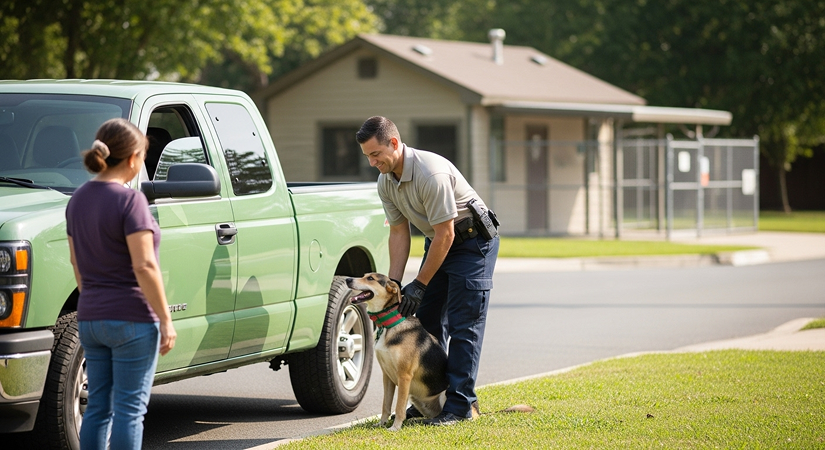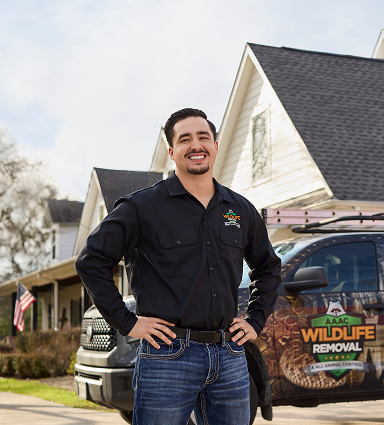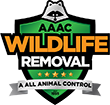How To Start A Nuisance Animal Control Business?
“To start a nuisance animal control business, begin by getting licensed and trained in humane wildlife removal. Invest in the right tools, learn your local regulations, and build a strong marketing presence in your service area. You can start solo or fast-track your success by joining a proven franchise like AAAC Wildlife Removal. With the right setup and skills, it’s a profitable, hands-on business that makes a real impact in your community.”
Are you thinking about starting a business that gets you outdoors, keeps your community safe, and actually makes a difference? A nuisance animal control business might be exactly what you’re looking for. Whether it’s raccoons in the attic, bats in the chimney, or armadillos wrecking the yard, homeowners and property managers need trained pros to deal with wildlife issues quickly and humanely—and they’re willing to pay good money for it.
This industry isn’t just a trend—it’s growing fast. As urban development spreads and wildlife habitats shrink, more animals are ending up in places they shouldn’t be. That means more opportunity for skilled professionals who can remove the animals safely and legally. If you’re curious about how to turn this into a career—or better yet, a full-on business—we’re walking you through the entire process step by step. Let’s dive in!
What is a Nuisance Animal Control Business?

A nuisance animal control business focuses on the safe and humane removal of wild animals that have become a problem for homeowners, businesses, or local governments. These are typically animals like raccoons, squirrels, skunks, bats, snakes, and even birds that cause damage, carry diseases, or create health hazards. Unlike traditional pest control operator, which deals with insects and rodents, wildlife removal targets larger, more complex intrusions that require specialized handling.
The work often goes beyond just trapping and removing the animal. It includes inspecting homes for entry points, sealing up access areas (called exclusion), cleaning up messes like droppings or nesting material, and advising clients on how to prevent future issues. It’s a mix of hands-on fieldwork, customer service, and sometimes even minor repairs—all aimed at solving a frustrating problem most people don’t know how to handle on their own.
This line of work also comes with a responsibility to the environment. Reputable operators use humane traps and follow legal guidelines for relocating or releasing animals. In many states, there are specific rules about how certain species must be handled, especially if they’re considered protected. That’s why nuisance animal control isn’t something you can just “wing”—it’s a skilled profession that benefits from real training, experience, and the right business model to grow it the right way.
Key Steps to Start Your Own Wildlife Control Business
Starting a nuisance animal control business isn’t just about grabbing a trap and putting up flyers. There are several critical steps you’ll need to follow to stay compliant, operate safely, and build a business that’s actually profitable.
1. Research Local and State Regulations
Every state—and sometimes each county—has specific rules about which animals can be removed, how they must be handled, and what licenses are required. You’ll need to check with your state’s wildlife or environmental agency to understand legal handling procedures, insurance requirements, and applicable business permits. Doing this upfront helps you avoid fines, delays, and major headaches.
2. Choose a Business Model
You can either build your wildlife removal business from the ground up or join an established franchise like AAAC Wildlife Removal. Going solo gives you full control but requires you to create everything from scratch—branding, marketing, systems, and training. Franchising gives you instant brand recognition, expert support, and a proven framework so you can skip the guesswork and focus on growth.
3. Get Trained and Certified
This is a hands-on, high-stakes job that requires proper training in safety, wildlife behavior, and local regulations. Organizations like NWCOA offer industry-recognized certifications, and franchises like AAAC Wildlife Removal provide in-depth, on-the-job training. Solid training ensures you’re handling animals humanely and protecting both your clients and yourself.
4. Buy the Right Equipment
To operate professionally, you’ll need traps, ladders, PPE, exclusion materials, and a reliable work vehicle. Over time, you’ll add specialty tools like snake cameras or thermal detectors. A good starter kit focuses on essential gear for common animals in your area, and you can scale your setup as demand increases and you add more services.
5. Set Up Legal and Administrative Basics
Once you’re ready to launch, form a legal entity like an LLC or S-Corp, open a business bank account, get insurance, and line up tools like scheduling software and invoicing platforms. Franchises like AAAC Wildlife Removal often provide or recommend these systems, making it easier to start organized and scale efficiently from the beginning.
Skills You’ll Need to Succeed
1. Physical and Technical Abilities
Wildlife control requires physical stamina and a strong comfort level with climbing, crawling, and working in tough environments like hot attics or under houses. On top of that, you need technical skills—understanding animal behavior, using tools safely, performing minor repairs, and installing exclusion devices like vent guards or chimney caps. A background in construction or inspections is a helpful bonus.
2. Communication and Customer Service
Clear, confident communication builds trust, especially when clients are stressed about animals in their home. Explaining your process and following up with helpful prevention tips shows professionalism and earns loyalty. Top-notch customer service leads to referrals, five-star reviews, and repeat business—all of which are crucial for long-term success in this industry.
3. Problem-Solving and Adaptability
No two jobs are the same, and wildlife doesn’t follow rules. You’ll need quick thinking and creativity to solve weird problems—like a raccoon in a wall or a snake under a porch. Adaptability also helps when your schedule changes last minute or jobs turn out more complex than expected, allowing you to stay efficient, reliable, and trusted in your community.
Marketing Your Wildlife Removal Business
1. Build an Online Presence That Works

In today’s world, your website is your storefront. A clean, mobile-friendly site with clear service pages, a visible phone number, and strong calls to action will make a huge difference in getting leads. You’ll want to highlight your service areas, show off before-and-after photos, and explain what makes your wildlife removal approach humane and effective. Bonus points if you include local testimonials or case studies to build trust.
Make sure your business is listed on Google Business Profile, Yelp, and other directories so you show up when locals search for things like “bat removal near me” or “wildlife control.” SEO (Search Engine Optimization) is key—using the right keywords in your content can help you rank on search engines and draw organic traffic. If you join a franchise like AAAC Wildlife Removal, much of this digital setup is already built in, which saves you time and gives you a competitive edge out of the gate.
2. Local Advertising and Partnerships
Offline marketing still works wonders for a boots-on-the-ground business like this. Think yard signs, vehicle wraps, door hangers, and flyers—especially in neighborhoods where you’ve just completed a successful job. A branded truck parked on a customer’s driveway is often the best ad you’ll ever run. It builds recognition and gets neighbors talking.
You should also look into partnerships with property managers, HOAs, realtors, and even local hardware stores. These relationships can generate a steady stream of referrals, especially if you offer a discount or referral fee. The more people who know and trust your name in the community, the more leads you’ll land without constantly having to pay for advertising.
3. Use Reviews and Word-of-Mouth to Your Advantage
Five-star reviews are gold in this business. Most people will check Google or Yelp before calling you, especially if they’re in panic mode over a raccoon in the attic. Ask happy customers to leave a review immediately after the job is done—make it easy for them with a quick link or follow-up text. The more detailed and local the reviews, the better.
Word-of-mouth can also go a long way. Encourage satisfied clients to refer friends, family, and neighbors by offering small incentives like discounts on future services. Building a reputation for being prompt, professional, and polite pays off big-time, especially in tight-knit communities where your name spreads fast.
Marketing Your Wildlife Removal Business
1. Build a Local-Focused Website
A professional website is your 24/7 salesperson. It should include your services, areas served, before-and-after photos, and a clear way to book appointments or request quotes. Be sure to optimize for local SEO—use city and neighborhood names, add a Google Map, and register your business with Google Business Profile to boost visibility in local searches.
2. Invest in Search and Social
Most people search online when they hear something scratching in the attic, so showing up in search results is critical. Google Ads and Facebook ads can help target your local market fast, especially in peak seasons. Use social media to post wildlife tips, photos from the field, and short videos showing humane removals—it builds trust and keeps your name top of mind.
3. Network with Local Partners
Real estate agents, property managers, roofers, and pest control companies are excellent referral sources. These pros often run into wildlife issues during home inspections or maintenance and need someone they can trust to handle it. A quick introduction, a few business cards, and consistent professionalism can turn into a steady stream of warm leads.
Why Franchising with AAAC Wildlife Removal Is a Smart Move?

Starting a business from scratch means handling everything yourself—branding, marketing, training, pricing, customer service, and more. That’s a lot to juggle, especially in a highly regulated field like wildlife control. When you franchise with AAAC Wildlife Removal, you skip the hardest part: figuring everything out alone. You get a proven business model, step-by-step operational guidance, and hands-on training that sets you up for success from day one.
What really sets AAAC apart is the level of support you receive. From lead generation and scheduling systems to equipment recommendations and territory planning, everything is designed to streamline your setup and growth. You’ll have access to a network of seasoned operators, a dedicated support team, and branding that’s already trusted by customers across the country. It’s ideal for entrepreneurs who want independence without going it completely alone.
Real Startup Costs and Profit Potential
1. Understanding Startup Investment
Starting a nuisance wildlife control business can be affordable with smart planning. Independent operators typically spend between $10,000 and $25,000 on essentials like equipment, vehicle setup, insurance, and marketing. In contrast, joining a franchise like AAAC Wildlife Removal involves a more structured investment—usually between $30,000 and $70,000—which includes a turnkey system, operational training, branding, and faster revenue potential that offsets the upfront cost with long-term value.
2. Revenue Streams and Profit Margins
Earnings come from multiple services like inspections, animal removals, exclusion repairs, clean-up, and preventative installations, with opportunities to land recurring contracts with HOAs, real estate agents, or rural property owners. Margins are often high, since most jobs require minimal materials but command premium pricing for skilled labor. As your experience grows and you optimize your workflow, you can easily hit six figures as a solo operator—or scale beyond that with a trained team under a well-run franchise system.
Common Challenges (and How to Beat Them)
Running a nuisance animal control business isn’t without its hurdles. One of the most common challenges is competing with low-cost, unlicensed operators or DIY approaches. Many homeowners initially try to solve wildlife issues on their own or hire the cheapest option they find online—often with poor results. It’s up to you to clearly explain the value of professional, humane removal and long-term prevention. Educating clients about the risks of improper handling, such as property damage or disease exposure, helps them understand why your expertise is worth the investment.
Another big challenge is managing physical strain and unpredictable schedules. Wildlife doesn’t wait for business hours, and emergencies can come up at any time—weekends, nights, or in the middle of a storm. The physical demands can also wear you down if you’re not prepared. The solution is to build a reliable routine, invest in the right gear, and eventually grow a team to share the workload. Many successful operators start solo, but scale up by training employees or hiring technicians to cover more ground without burning out.
